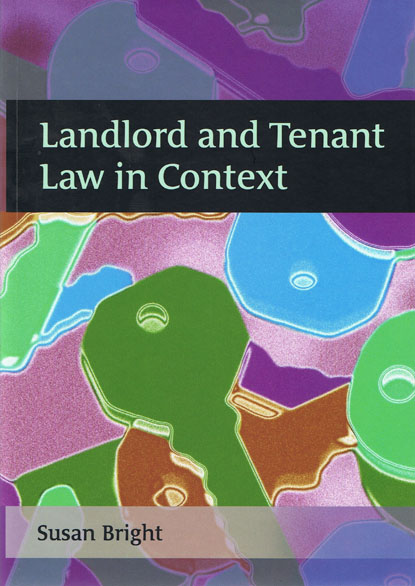We will be closed from 5pm Thursday 17th April for the Easter Bank Holidays, re-opening at 8.30am on Tuesday 22nd April. Any orders placed during this period will be processed when we re-open.

This new work, a successor to the author's earlier book (co-written with Geoff Gilbert) Landlord and Tenant Law: The Nature of Tenancies (1995), though now the work of a single author and completely up-dated and rewritten, shares the same aim of setting leases in their wider context by weaving together matters of law and policy. The book provides a clear understanding of the main principles of landlord and tenant law in each sector.
The style of this book is distinctive. First of all, it explains the law of landlord and tenant law by showing how the statutory and common law rules have been shaped by wider commercial, social, economic and policy considerations, by the growth in human rights law and by changing concepts of community and justice. The other innovative feature of the book is that the law is explained by reference to the different stages of the relationship; entering a lease, regulating leases, managing leasehold property, and so on.
The stages of the relationship provide the structure for the book. Most landlord and tenant books set out the 'common law' rules in the opening chapters and then deal with the legislative regime for each individual sector later in the book. By instead setting the law in the different stages of the relationship, this book is able to show where the shared issues faced by landlord and tenant receive a common legal response, and where the different context of the leasehold relationship has led to a variety in legal rules.
Landlord and tenant law is now very different from the common law of 100 years ago. In describing the modern law (or laws), the unique style of this book enables the reader to see how the commonalities and the contrasts between the law in the different sectors can be explained by reference to way that leases are differently used and regulated.